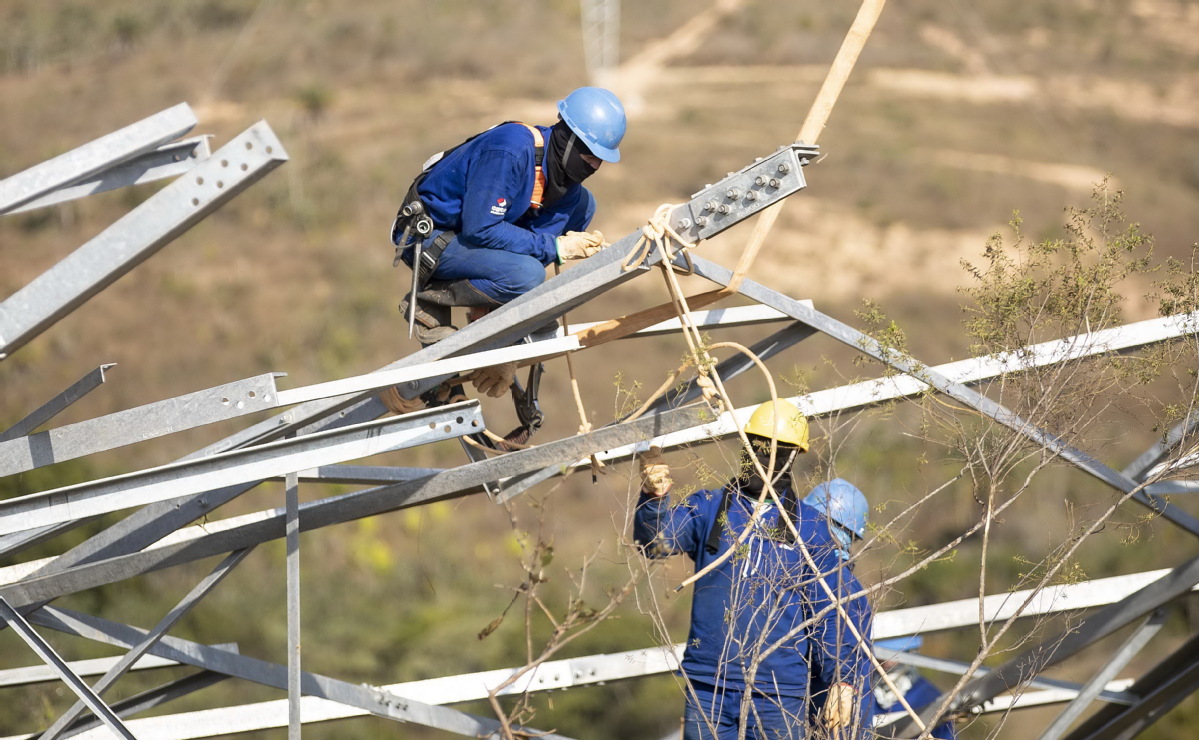BRICS to get China digital push
By ZHONG NAN | China Daily | Updated: 2021-09-07 08:59

Member country firms will receive encouragement to deepen trade ties
China will work with its partners to push for the implementation of Strategy for BRICS Economic Partnership 2025, known as the BRICS Strategy 2025, to reinforce intra-platform cooperation, and seize opportunities in emerging fields like digital and green technologies for more growth potential, said a government official on Monday.
These measures will help businesses in BRICS countries strengthen cooperation in the development of digital technology and applications to facilitate trade and investment, and help micro, small and medium-sized enterprises to better integrate into the global value chain, said Chen Chao, deputy director-general of the Department of International Trade and Economic Affairs at the Ministry of Commerce.
"They are also practical to jointly respond to climate changes and prevent relevant steps from causing business barriers in the global market," he said.
BRICS is an acronym for the five major emerging countries of Brazil, Russia, India, China and South Africa, which together represent about 42 percent of the global population, 24 percent of global GDP, 18 percent of global trade and 25 percent of the world's foreign investment on an annual basis, according to ministry data.
Chen made the comments after the participating parties of the 11th BRICS Economic and Trade Ministers' Meeting announced that they had achieved positive outcomes. The meeting, under the chairmanship of India, was held in video format on Friday.
Given the fluctuating COVID-19 pandemic and the fragile recovery of the world economy, Chinese Commerce Minister Wang Wentao reiterated during the meeting that BRICS members need to strengthen solidarity and cooperation to jointly boost economic recovery. They should actively participate in the reform of the World Trade Organization and provide an early resolution so as to resume normal functioning of its appellate body.
Wang and his counterparts approved a joint communique and reached outcome documents such as the BRICS statement on cooperation in the multilateral trading system, the framework for consumer protection of e-commerce, the framework for cooperation in professional services, and the implementation roadmap in the fields of trade and investment for the BRICS Strategy 2025 on Friday.
Proposed in November 2020, the BRICS Strategy 2025 defines a development path for BRICS and sets the framework for cooperation of its members, including embracing the digitization wave and creating conditions for reducing potential risks on international markets, in accordance with existing economic trends and conditions.
They have gained solid results in the economic and trade field for the 13th BRICS Summit, said Chen from the Ministry of Commerce.
As China will hold the rotating presidency of the BRICS countries in 2022, he said that the Ministry of Commerce will organize meetings of economic and trade ministers and related liaison groups to strengthen anti-pandemic cooperation and promote economic recovery as the main theme to undergird the revitalization of multilateral cooperation, and common growth among them.
Wang Lei, director of the Center for BRICS Cooperation Studies at Beijing Normal University, said the five countries have entered a new stage of comprehensive cooperation that would not just focus on trade but on a wider range of issues to help raise people's living standards and achieve an economic rebound.
He said priorities for BRICS economies in the coming years will be stimulating strong economic growth, confronting macroeconomic shocks and financial volatility, supporting the multilateral trading system, and resisting emerging global uncertainty caused by factors like the rise of unilateralism and protectionist measures that run counter to the rules of the WTO.
With BRICS member countries boosting business ties, infrastructure and technology cooperation, the BRICS New Development Bank announced last week that it has added the United Arab Emirates, Uruguay and Bangladesh as its newest members.
Since the beginning of its operations in 2015, the NDB has approved about 80 projects of its members in all, totaling a portfolio of $30 billion. The projects cover sectors like transport, water and sanitation, clean energy, digital infrastructure, social infrastructure and urban development.
Headquartered in Shanghai, the bank was established by Brazil, Russia, India, China and South Africa.
























